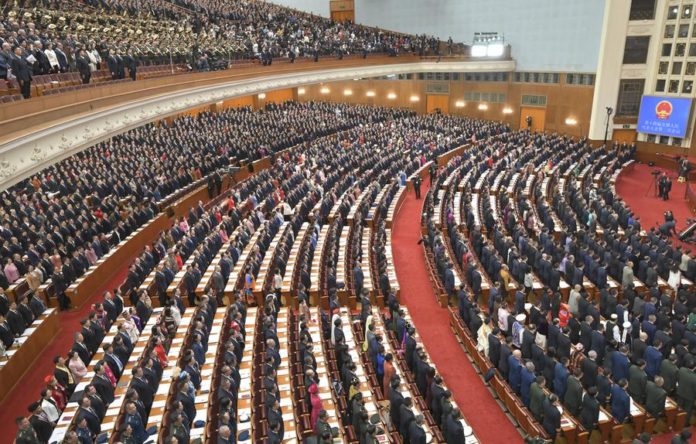
BEIJING (Xinhua) — During China’s ongoing annual “two sessions,” a major event in the country’s political calendar, the phrase “new quality productive forces” has emerged as a buzzword among national legislators and political advisors. This term is gaining attention in the context of China’s economic upgrading.
In the government work report presented at the opening of the annual session of the National People’s Congress on Tuesday, there was a notable emphasis on accelerating the development of new quality productive forces as part of efforts to modernize China’s industrial system. This strategy is seen as key to maintaining and enhancing China’s quality growth, both now and in the future.
The development of new quality productive forces in the world’s second-largest economy comes at the right time to address economic challenges.
Marked by innovation, new quality productive forces are advanced productivity in essence. These forces represent a departure from traditional economic growth models, aligning with China’s new development philosophy which prioritizes innovation and sustainability. They encompass high-tech, efficient, and high-quality productivity methods.
China, after years of rapid growth, is shifting toward an economy characterized by high-quality development and industrial upgrading.
By fostering new quality productive forces, China hopes to transform traditional industries, making them more advanced, intelligent, and environmentally friendly. This transition is vital for improving productivity, efficiency, and global competitiveness.
For example, China’s push toward intelligent mining exemplifies this shift. By introducing advanced technologies in the coal mine industry, China aims to enhance production safety and efficiency while reducing pollution.
The impact of new quality productive forces on China’s economic structure is already evident. According to the National Bureau of Statistics, there has been significant year-on-year growth in sectors like new energy vehicles, solar cell production, and service robots. China’s global standing in research and development investment and innovation indices further underscores the country’s commitment to these new forces.
Looking to the future, these new forces are expected to drive growth in emerging sectors. The rapid adoption of technologies like artificial intelligence and blockchain demonstrates this trend. The government plans to spearhead development in future industries such as quantum technology and life sciences, while establishing zones dedicated to these cutting-edge sectors.
New quality productive forces are poised to become a major driver of China’s economy, playing a crucial role in China’s vision of becoming a great modern socialist country.
